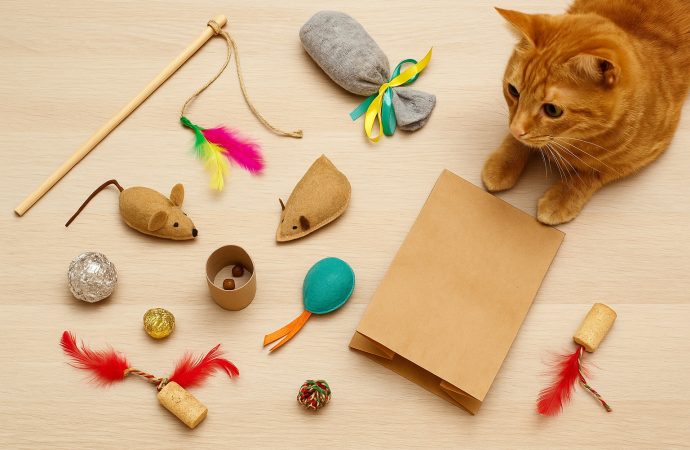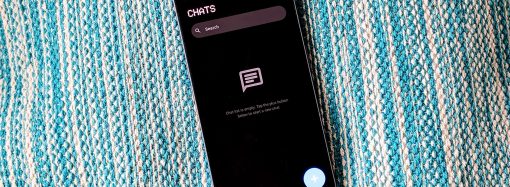Introduction: Why DIY Cat Toys? Keeping your cat mentally stimulated and physically active is essential for their health and happiness. While pet stores offer a wide variety of cat toys, many of the most entertaining and enriching options can be made right at home with simple household materials. Not only is it cost-effective, but making
Introduction: Why DIY Cat Toys?
Keeping your cat mentally stimulated and physically active is essential for their health and happiness. While pet stores offer a wide variety of cat toys, many of the most entertaining and enriching options can be made right at home with simple household materials. Not only is it cost-effective, but making DIY cat toys is also a fun way to bond with your furry friend and understand their unique play style.
This guide will walk you through several easy, affordable, and safe DIY cat toy projects that you can try today. Whether you’re a crafty pet parent or just looking for weekend activities, these ideas require minimal effort and materials.
1. The Classic Sock Toy
Materials Needed:
- Old sock (clean)
- A handful of catnip
- Polyfill or shredded paper
- String or rubber band
Instructions:
Fill the sock with a small amount of catnip and polyfill. You can also use shredded paper for a crinkly texture that cats love. Once filled, tie the open end of the sock tightly with string or a rubber band. Give it a gentle shake to release the catnip scent and toss it to your cat.
Why it works: The scent of catnip is irresistible to most felines, and the sock provides a soft texture for them to bite, kick, and cuddle.
2. Feather Wand Toy
Materials Needed:
- A wooden dowel or stick (12-18 inches)
- String or twine (2-3 feet)
- Feathers or ribbons
- Glue or tape
Instructions:
Tie one end of the string to the dowel securely. On the other end, attach a few feathers or brightly colored ribbons using glue or tape. Allow it to dry thoroughly before using it.
Why it works: This interactive toy mimics the movement of prey, triggering your cat’s natural hunting instincts. Drag it around the floor or dangle it in the air for an exciting chase.
3. Toilet Paper Roll Puzzle
Materials Needed:
- Empty toilet paper rolls (3-5)
- Cardboard base (optional)
- Glue (optional)
- Cat treats or kibble
Instructions:
Arrange the toilet paper rolls upright on the base and glue them in place if needed. Drop a few treats inside each roll and let your cat figure out how to retrieve them.
Why it works: This toy stimulates your cat mentally and encourages problem-solving. It’s also a fun way to deliver treats in moderation.
4. Crinkle Ball Surprise
Materials Needed:
- Aluminum foil or parchment paper
- Bell (optional)
- Catnip (optional)
Instructions:
Crumple a small sheet of aluminum foil into a ball, adding a pinch of catnip or a tiny bell in the center if you wish. Make sure the foil is compact and has no sharp edges.
Why it works: Cats are attracted to the noise and erratic movement of crinkly balls. These toys are great for solo play sessions when you’re not around.
5. DIY Puzzle Box
Materials Needed:
- Small cardboard box with lid
- Utility knife or scissors
- Cat treats or small cat toys
Instructions:
Cut various-sized holes in the lid of the cardboard box, big enough for your cat’s paw to fit through. Drop in a few treats or best cat toys and put the lid on.
Why it works: This enrichment toy provides mental stimulation as your cat figures out how to retrieve the items inside. It’s a great boredom-buster for indoor cats.
6. Sock-and-Ribbon Dangler
Materials Needed:
- Old sock
- Ribbons
- Needle and thread or glue
Instructions:
Sew or glue several colorful ribbons to the toe end of the sock. Swing it around for your cat to chase or leave it on the floor for solo play.
Why it works: Cats love ribbons and the sock acts as a weight to give the toy unpredictable movement.
7. Wine Cork Chasers
Materials Needed:
- Wine corks
- Feathers, ribbons, or yarn
- Glue
Instructions:
Stick feathers or tie ribbons to one end of the cork using glue. Let it dry completely and toss it on the floor for your cat.
Why it works: Lightweight and rollable, corks make for excellent chase toys that don’t damage floors.
8. Paper Bag Playground
Materials Needed:
- Plain paper bag (no handles)
- A few lightweight toys or tissue paper
Instructions:
Open the paper bag and place some toys or tissue paper inside to create noise and intrigue. Place it in a quiet corner and let your cat explore.
Why it works: Cats love to hide, pounce, and stalk in enclosed spaces. The rustling sound adds to the excitement.
9. Felt Mouse Toy
Materials Needed:
- Felt fabric
- Scissors
- Needle and thread or glue
- Polyfill or fabric scraps
- Catnip (optional)
Instructions:
Cut two mouse-shaped pieces from the felt. Sew or glue them together, leaving a small gap to stuff with filler and catnip. Seal it shut and add a ribbon tail.
Why it works: The soft texture and enticing scent make this toy a great cuddle or pounce target.
10. Bottle Cap Rattle
Materials Needed:
- Two plastic bottle caps
- Small beads or rice
- Tape or glue
Instructions:
Place a few beads inside one cap, then seal the two caps together with glue or strong tape. Ensure it’s secure to avoid choking hazards.
Why it works: The noise and lightweight design make this a stimulating toy that’s easy to bat around.
Safety Tips for DIY Cat Toys
- Avoid small parts: Always supervise your cat with new toys and avoid small or loose parts that can be swallowed.
- No toxic materials: Use non-toxic glue, inks, and paints if decorating or assembling toys.
- Inspect regularly: Discard any toy that shows signs of wear and tear to prevent accidental ingestion.
Latest Trends in Cat Toys (2025 Update)
Recent surveys among USA-based pet owners show a growing trend in sustainable and homemade cat toys. Many are ditching plastic for natural materials like felt, wood, and sisal. As more pet parents become eco-conscious, DIY toys have become a popular option not just to save money, but also to reduce their environmental pawprint.
In fact, brands like West Paw and Kitty Kasas have begun integrating recycled components into their products, while some Etsy sellers now specialize in handcrafted best cat toys made from upcycled materials.
FAQs
Q1. Are DIY cat toys safe?
Yes, as long as you use non-toxic materials and avoid small parts that could be swallowed. Always supervise your cat when introducing a new toy.
Q2. What are the benefits of making homemade cat toys?
DIY cat toys are affordable, customizable, and environmentally friendly. They also provide a great way to bond with your cat.
Q3. How often should I rotate my cat’s toys?
It’s a good idea to rotate toys weekly to keep your cat interested and mentally stimulated. Fresh toys spark curiosity.
Q4. Can kittens play with DIY cat toys too?
Absolutely! Just ensure the toys are smaller, softer, and free from choking hazards.
Q5. What are the best cat toys for indoor cats?
Puzzle feeders, feather wands, and interactive DIY toys like the puzzle box or crinkle balls keep indoor cats engaged and active.
Conclusion
DIY cat toys are an excellent way to keep your feline friend entertained, healthy, and happy without breaking the bank. With just a little creativity and some everyday materials, you can create a toy box that rivals any store-bought collection. Plus, these projects give you the chance to better understand your cat’s preferences — whether they love to pounce, chase, chew, or cuddle.
So gather your supplies, set aside some time, and start crafting. Your kitty will thank you with purrs, playful zoomies, and maybe even a nap in your lap afterward.
Let the playtime begin! 🐾
Read more: Easy Ways to Keep Your Cat’s Litter Area Fresh and Clean
















